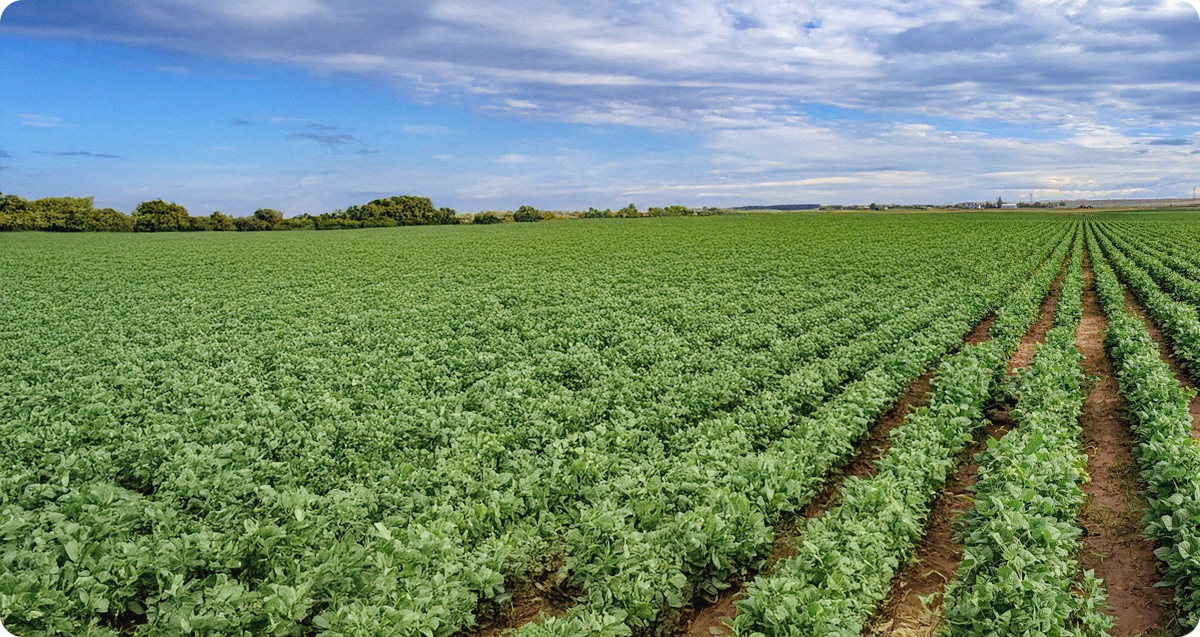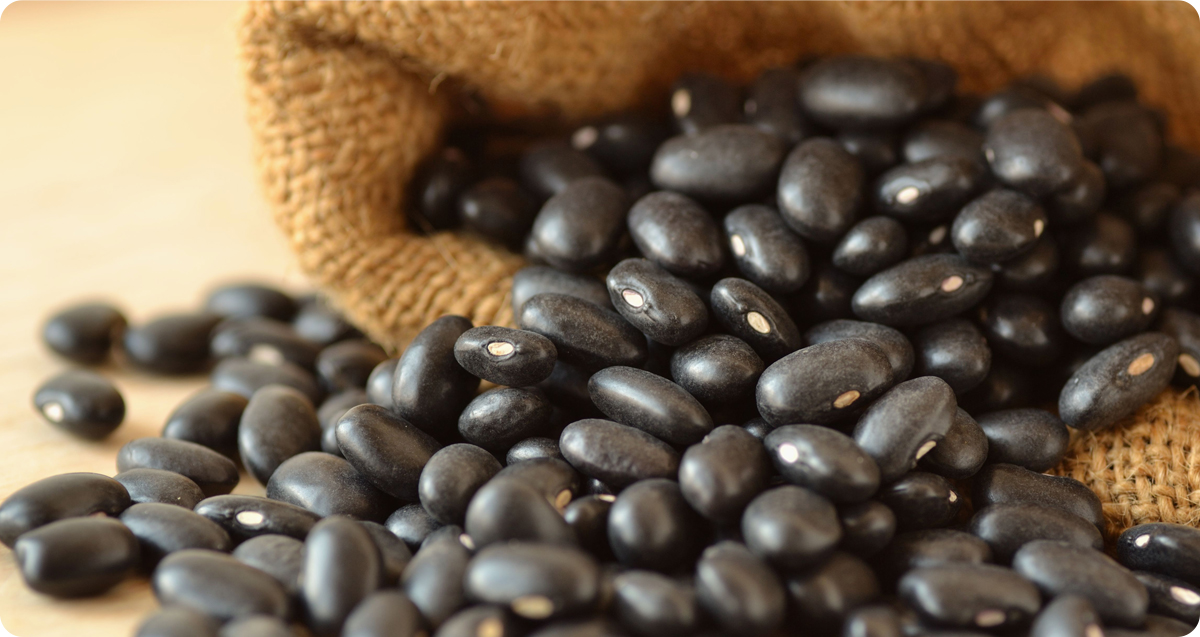September 11, 2025
The 2024 bean crop was a step in the right direction for Mexico after a year of terrible drought. But is the hole in their stocks now filled? Will imports drop? We talk to industry experts in the USA, Mexico, Argentina and Brazil to get insider knowledge on expectations for supply, demand, and prices of North American black beans and pintos in 2025/2026.


US pinto bean acres plunged by as much as 22% in 2025, reflecting expectations of reduced Mexican demand and softer global prices.
2023/2024 was a bonanza for US bean exports to Mexico. A severe drought year (the third in a row) had decimated Mexico's internal crops, leading them to import around 313 KMT of various bean classes – a 230% rise YoY. Of that quantity, some 84% came from the USA.
The 2024/2025 cycle has proved more successful for Mexican production, and imports of beans have slowed. The outlook is different to last year: Mexican bean inventory is high, and US farmers have dropped their acres. Over recent years, Brazil and Argentina have increased their chunk of the Mexican black bean market with bigger and bigger shipments – could these advances be permanent, or just a flash in the pan? Is the USA losing ground to South America?
US black and pinto bean acres have nosedived in 2025 in anticipation of a drastic reduction in imports from Mexico. Charles Wachsmuth of Chippewa Valley Bean predicted the drop when speaking to The Western Producer back in April, telling the outlet that acreage drops were "predominantly going to be in black beans and pinto beans," citing a ready supply of both in the market. Brian Clancey of Stat Publishing predicted an 11% drop in black bean acres and a 12.5% drop in pintos.
In the end, the acres were lower than expected. Numbers from trusted industry sources suggest pinto and black bean acres may have fallen as much as 22% and 23%, respectively. These are believed to reflect two things: doubts over this year's import demand from Mexico, and also a softening of black bean prices globally.
Dylan Karley of North Central Commodities suggests that acres on both black and pinto beans were down between 22-24%, but believes strong yields could compensate: "Right now it looks as if US yields are going to be up a bit. I think it's possible here going to be down between 16-18% on production as yields look like they may be above-average."
Black and pinto availability will inform demand. To find out how stocks sit in the region, we need to cross the border to the US’s biggest international buyer.

Mexico’s bean stocks surged in 2025, with imports dropping 40% year-on-year in the first seven months as domestic harvests recovered.
Autumn 2025 sees Mexican bean stocks at a high, says Felipe Sandoval of BeGrait, giving traders motivation to sell and not buy.
"Right now,” says Sandoval, “the primary task of every trader in Mexico is to liquidate their existing inventory of beans rather than buy anything new, which is a signal that the market has an excess of supply."
This assessment looks to be backed up by import numbers on the ground – El Universal has reported that Mexican bean imports dropped by 40% YoY in the first seven months of 2025.
An additional factor, says Sandoval, is the weakening US dollar: "The changing exchange rate has affected the profitability of Mexican bean buyers. A lot of imports were bought at a time when the dollar got you more than 20 pesos, whereas today it's a lot lower, around 18.5 pesos a dollar – this has certainly disincentivised new purchases."
To create more downward pressure on prices and imports, fresh stocks are en route, as the first of 2025’s two Mexican bean crops – the spring/summer cycle – has recently been harvested with a projected 10-15% rise in production YoY, continuing an upward climb from the catastrophic crop of 2023.
The stabilization of Mexico's internal crops and declining global prices have not gone unnoticed by US farmers, but what about the smaller players in the market, like Brazil and Argentina? Having grown as suppliers to the Mexican market, will the oversupply affect their willingness to export?

Brazil and Argentina have stepped up as black bean suppliers to Mexico, with shipments reaching 30 KMT from Brazil and 27 KMT from Argentina in 2024.
Argentina has been a back-up supplier of black beans to Mexico since at least 2019, but recent years have seen their numbers jump significantly. In 2023 – the year of Mexico's severe drought – Argentinian exports to Mexico peaked at 29.5 KMT, up from zero in 2020. In 2024, the number dropped to 27 KMT.
In 2024/25, Brazil was given access to the Mexican market, sending 30 KMT of its own black bean crop.
But how much of the Mexican market has actually slipped from the US to South America? Pietro Schisler of Arbaza noted a downward shift in exports: "Brazil's black bean exports to Mexico have dropped over the last year,” says Schisler. “Prices were low from March through June 2025, and in May, exports were a third of those in the same period of 2024. Globally, the demand for Brazilian black beans is lower, with Argentina, Mexico, and the US dominating the market. Brazil is more of a secondary supplier."
As for Argentina, Nicolás Karnoubi, VP of the Chamber of Pulses of Argentina (CLERA), believes black bean exports to Mexico aren't guaranteed: "It’s difficult to predict what next year's exports will be into Mexico – some years we are allowed to export more to them than others. For this reason it's hard to establish a trend."
Dylan Karley believes the loss of US dominance in black beans is significant: "Normally, the US has 90-95% market share of total Mexican bean imports. This crop year, that dropped to 78% – the remaining 22% was split between Argentina, Brazil, and Canada."
However, Karley also suggests the Brazilian beans had a mixed reception: "Some significant Mexican customers told me that they saw a lower conversion to consumer rate than normal because of spoilage due to inconsistent moisture levels and inconsistent quality. But there were success stories, too – if you got the right batch, you came out well ahead because the pricing was great."
Felipe Sandoval, on the other hand, offers scepticism about Brazil and Argentina's participation in the Mexican market, saying: "I don't believe they're going to consolidate themselves as fixed or consistent providers for Mexico. The reality is that these countries have come into the market under special circumstances – the role will continue to be a complementary option, rather than a fundamental pillar in the market."
So, what does the second half of the year look like for black beans and pintos?
Felipe Sandoval suggests we are looking at a year where prices weaken even further, projecting a "clear downwards trend", and suggesting new crop prices will "undoubtedly be below last year's levels".
Dylan Karley agrees and believes prices could hit radical lows: "Pricing from the US to Mexico has greatly dropped over the past couple of months, and we're going to see levels of pricing not seen since about 2015/2016." With such low prices, Karley believes US exports to Mexico could be "average" despite high Mexican inventory.
Orion Roy-Wright of ADM says black and pinto purchases from Mexico have been “steady” despite the reports of high stocks.
How the Mexican market pans out in the end will depend on price stability, domestic sales, and the outcome of the US harvest – American traders will be keeping a keen eye on movements below the border, both in Mexico and further south, to the big bean beasts of Brazil and Argentina.
Disclaimer: The opinions or views expressed in this publication are those of the authors or quoted persons. They do not purport to reflect the opinions or views of the Global Pulse Confederation or its members.